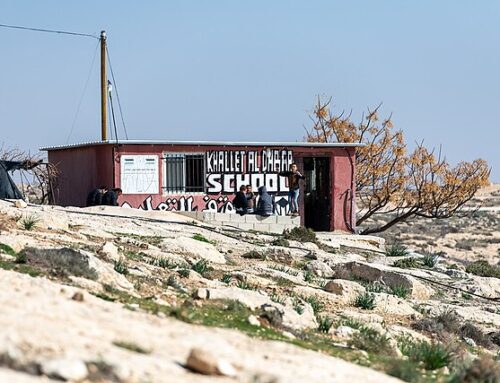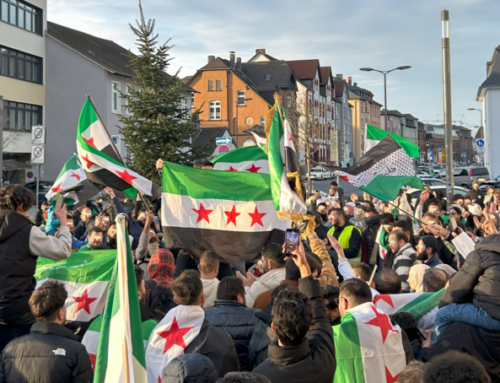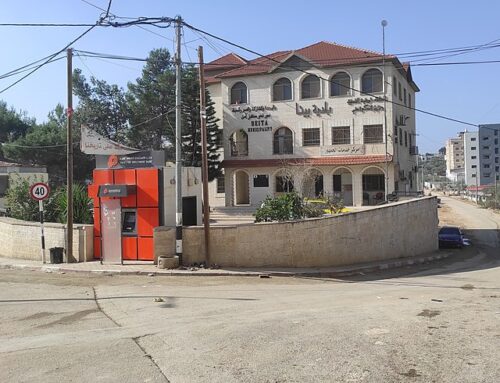The recent wave of violence between Israel and Hamas, which to date has resulted in the death of more than 100 Palestinians and the injury of several Israelis, continues to escalate with no clear sign of when it might end. The only thing that is fairly certain is how it will end. Both parties understand the decision between violence or cease-fire is primarily a function of credibility and how much pain they are willing to endure. When each feels it has reestablished its credibility to a level it can live with, and the pain is becoming unacceptable, then a renewed truce will take hold. Neither side has any illusions that it will deliver a devastating blow to the other that will change the uneasy truce that has prevailed – with some major interruptions – since Hamas took over control of Gaza from the Palestinian Authority (Fatah) in 2007.
There was no clear beginning to the current crisis. However, the drastic change in Hamas’s fortunes since its ally, former Egyptian President Mohammed Morsi, was overthrown by his military in July 2013 is a major factor. Hamas was quickly dropped as an ally by most regional governments, except Qatar and Turkey, and has since been scrambling to simply pay its employees and keep its government afloat.
For its part, the Palestinian Authority and its president, Mahmoud Abbas, has also been floundering in the wake of the failure of the Kerry-inspired peace negotiations at the end of April. This pushed Fatah and Hamas into forming a long rumored “reconciliation” government, which Israel sees as a threat, even though it was made clear the new government would include “technocrats,” not Hamas officials, and would comply with the Quartet’s three conditions: recognition of Israel, renunciation of violence, and respect for previous agreements.
Then on June 12, Israel was thrown into a frenzy by the apparent abduction of three teenage Yeshiva students who were hitchhiking near the West Bank city (and frequent flashpoint) of Hebron. Hitchhiking in the West Bank is understood implicitly by both sides as a political act expressing Israeli control, and the teens’ disappearance was perceived by all Israelis not as an ordinary criminal act but, rather, as a gruesome act of nationalist resistance by Palestinians. Israel immediately blamed Hamas, claiming it had clear evidence of its involvement, although it couldn’t make the details public. Israel proceeded to “search” for the missing boys, but also to do all it could to disrupt Hamas’s operations in the West Bank, arresting hundreds of its officials and supporters, entering numerous homes, and killing six Palestinians in the process. Israel was transfixed for the 19 days of the search; the story dominated the news, and the government emphasized how this is what “they” do, with the clear – and often explicit – implication that “we” are better, and how could we trust “them?”
On June 30, the boys’ bodies were found. It has since come to light that Israeli security forces knew with almost complete certainty that the boys had been killed immediately after their abduction, so in retrospect the search was a transparent device to destroy Hamas’s West Bank infrastructure. Israeli journalist Shlomi Eldar reported in Al-Monitor on June 29[1] that the suspects were rogue Hamas members who acted seemingly without the knowledge, let alone acquiescence, of any of the Hamas leadership. For now, this seems to be the general consensus. Nevertheless, Israel has carried out numerous air attacks on Hamas installations in Gaza to “punish” it.
The night after the boys’ bodies were found, a 16 year-old Palestinian boy, living in a middle class suburb of Jerusalem, was abducted and killed. The coroner’s report shows he was burned to death. Within two days, six Jewish teenagers were arrested by the Israeli police (three have since been released). No official details were forthcoming, but reports from various sources say that they are from the “religious” community (a very wide swath of society). Over the weekend, serious riots by Palestinians were reported in East Jerusalem and in a predominantly Palestinian area (Wadi Ara) in the North. In central Jerusalem, police protected Palestinians from Jewish mobs. The rioting was the worst in Israel since the beginning of the Second Intifada in October 2000, when thirteen Israeli Arab citizens were killed by police. Both sides are trying to prevent a repetition, and with the quick capture of the Jewish murder suspects, mob violence seems to be dying down, though verbal violence on both sides persists. However, military escalation is growing.
Occasional rockets were fired at Israel from Gaza during this period and, as usual, Israel retaliated. These rockets are usually fired by Islamic Jihad and the “Popular Resistance Committees,” which consider Hamas to be far too moderate, especially in recent months. However, following the July 6th air strikes on Gaza that killed six of its fighters, Hamas began taking credit for rockets launched at southern and central Israel. Damage and casualties so far have been minimal; most of the rockets not intercepted by Israeli defenses have struck in open fields. Israel has responded with massive air attacks on hundreds of targets. Sources now report more than 100 Palestinians, including more than 20 children, have been killed during the bombings.[2] Warning sirens have gone off in Jerusalem, Tel Aviv, and dozens of other Israeli localities. (I happen to be writing this in the northern city of Akko (Acre) on July 11. Hezbollah in Lebanon is on the opposite side of the Syrian civil war from Hamas, so it seems unlikely they will open up a front in the north of Israel, but reportedly a Hamas rocket has reached Haifa, less than 20 miles across the bay.)
Both sides are seeking a return to the status quo ante. Hamas is bitter because Israel has re-arrested dozens of those released in the 2011 Gilad Shalit prisoner swap, and claims Israel broke its agreement. It also demands that Israel allow Qatar to transfer $20 million to Hamas to pay outstanding salaries, and that Egypt and the PA agree to ease the conditions at the Rafah crossing, which is almost completely closed.[3]
Despite Israel’s vast military superiority, there is general, though not unanimous, agreement in the Israeli government that a ground invasion is highly undesirable. Nevertheless, Israel has authorized the mobilization of over 40,000 reserve troops to intimidate Hamas, demonstrate the government’s resolve to ordinary Israelis, and spur outside pressure on Hamas to stand down – and of course to carry out an incursion if necessary.
Unlike previous crises, there is no obvious mediator to facilitate negotiations between the parties. Egypt’s two previous presidents, Hosni Mubarak and Mohammed Morsi, successfully played that role, but Egypt’s new president, Abdel Fattah el-Sisi, despises Hamas and would have difficulties serving as an interlocutor. Turkey and Qatar are other possibilities, but there is no indication yet of their involvement.
At this point, the escalating conflict appears to be a repeat of previous, highly asymmetrical campaigns in which Palestinian casualties will far outnumber those of Israelis. Outside governments and organizations are deploring the violence, with opinions on who’s primarily responsible varying widely according to the observer. Extreme frustration and anger is evident on both sides, with most ordinary people pleading, “Why can’t [insert enemy’s name] leave us alone!” but also, “We have to teach them a lesson this time.”
The tragic irony is that although Hamas and Israel regard each other as existential enemies, both are quite willing to live with a cease-fire for the foreseeable future. The lack of trust, however, makes the arrangement excessively vulnerable to any tremor. In this case, unfortunately, the actions of spoilers, whose goal was to disrupt the Hamas-Fatah reconciliation and renew Hamas’s zeal for fighting Israel, seem to be succeeding.
This article originally appeared at http://www.mei.edu/content/article/new-wave-violence-between-israelis-and-palestinians-view-israel






“…which to date has resulted in the death of more than 100 Palestinians and the injury of several Israelis…” Kind of says it all in a way.
When missiles are fired from civilian areas aiming at civilian areas, adlnd using civilians as human shields, that is a crime — and invites the death of some of these citizens in the retaliation –perhaps deliberately so as to garner predictable cries of ‘shame’ from reliable Western ‘progressives’…
Appoval? Censorship, more like…
Anonymous makes a very brave comment. Would there be a difference if one hundred Jews were dead?